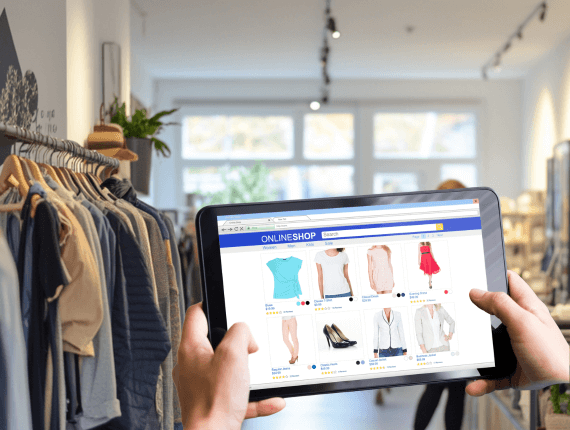Investment in technology the answer to modern consumer expectations?

The transformations that have been affecting retail for several years are also affecting consumer expectations. They want online and in-store shopping to create a consistent and convenient experience at every stage of the customer journey. To meet this, retailers need to invest in modern technologies, such as smart inventory management systems. These will allow them to face the growing demands of the market and keep their businesses competitive. These are among the main findings of Zebra’s 17th Annual Global Consumer Behavior Survey, in which more than 4,200 respondents were interviewed.
Customers want a unified, consistent experience
As many as 78% of consumers say they prefer a combination of online and in-store shopping. Exactly the same percentage prefers to shop at retailers that have physical stores in addition to their online sales. However, this is not enough to keep the customer. For this to happen, a retailer must provide a consistent experience across all channels – from e-commerce to mobile apps to traditional retail outlets.
Today’s customer expects seamless integration of all sales channels and that the same ease and convenience provided by the online channel will also be experienced when visiting a stationary store. Whether it’s browsing products, checking availability or making a purchase, the customer journey should be simple and convenient.
Declining customer satisfaction and tips on how to reverse the trend
Although consumer satisfaction with shopping is still high, it is declining. In the case of brick-and-mortars it is 81% and has recorded a 4% y/y decline, while when it comes to e-stores it is 79% and here we are dealing with as much as a 6% y/y decline. What makes customers increasingly dissatisfied? What steps can retailers do to reverse this trend?
A big influence on customer satisfaction is personalization. 76% of consumers expect a unique, customized experience if retailers have information about them and their shopping preferences. Personalization makes customers feel noticed, and this makes it very likely that they will repeat purchases. Retailers therefore need to use the collected data wisely – recommend relevant products, offer personalized promotions, etc.
Today’s shoppers are demanding and expect that at a store clerk they will not only pay for the goods they are buying, but also hear useful information, such as when the product will be available. The lack of accurate, real-time inventory visibility is one of the main reasons for customer frustration.
Investing in technologies that enable real-time inventory updates will not only help customers, but also enable salespeople to provide better service. The latter, with accurate and up-to-date inventory information, can immediately provide answers, suggest alternatives, or arrange home delivery, which will be a rewarding experience for the customer.
A factor that significantly affects customer satisfaction when they visit a stationary store is the lack of staff to help them. If salespeople are unable to provide adequate advice because for example they are busy with other tasks, customers are likely to choose to go to another shop. Retailers therefore need to invest in tools and technologies that will make store clerks work more efficient and easier. And also less stressful.
87% of store employees feel more appreciated when their employer provides them with tools that improve productivity. They are not only a nice addition, but help employees do their jobs well and not get stressed. Modern solutions, make it possible for store clerks to spend more time on what is really important – providing customers with the best possible shopping experience. It’s also worth mentioning here that as many as 85% of employees in stores prefer to manage their schedules and tasks through mobile apps.
Security in stores is important, of course, but too much can discourage customers from shopping. 78% say that locking products in display cases or securing them in a way that makes them difficult to access is annoying. If a customer has to look for an associate to open a glass display case for them, they may find it too much of an obstacle and abandon their purchase.
One of the most important issues for consumers are returns – as many as 82% of customers prefer retailers that offer a hassle-free way to return goods. Retailers that provide it not only take care of customer satisfaction, but also have a good chance to gain their loyalty. Complicated procedures, long waiting periods for returns or the need to pay additional costs are factors that can effectively discourage consumers from making further purchases.

